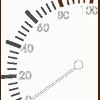Gtr 4wd Problems
Announcements
-
Similar Content
-
Latest Posts
-
I would hope. But, we all know even the best companies have an issue sporadically.
-
By Dose Pipe Sutututu · Posted
LOL well, lucky mine doesn't have some R shit on it. Around town, it handles so much better than the R33, R33 in the wet is pretty dangerous to the untrained hoon, especially with 13kg/mm front springs. -
Tiguans are the sort of shitbox that I drive around the outside of in the wet. Especially if they've got an R on the back. My understanding is that anyone with a VAG product with an R on the back cannot drive.
-
By Dose Pipe Sutututu · Posted
I drive the Tiguan much harder than the Skyline in all conditions, because it just grips and hooks, unlike the R33 shit box -
The rain is the best time to push to the edge of the grip limit. Water lubrication reduces the consumption of rubber without reducing the fun. I take pleasure in driving around the outside of numpties in Audis, WRXs, BRZs, etc, because they get all worried in the wet. They warm up faster than the engine oil does.
-





Recommended Posts
Create an account or sign in to comment
You need to be a member in order to leave a comment
Create an account
Sign up for a new account in our community. It's easy!
Register a new accountSign in
Already have an account? Sign in here.
Sign In Now